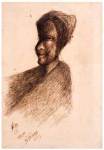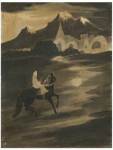The sixth edition of the India Art Fair will see 91 modern and contemporary exhibitors flood New Delhi’s NSIC grounds for four days (30 January–2 February). More gallerists are showing each year – yet the market imposes struggles of its own.
The 2014 fair aims to educate, engaging Indian collectors and bringing more international (particularly Chinese) collectors to New Delhi, says Sandy Angus, the fair’s co-owner and founder of Art HK, ArtInternational Istanbul and Art14. A programme of free public talks by figures such as Budi Tek is geared to do just that, with Tate Modern director Chris Dercon and critical theorist Homi Bhabha headlining on ‘The Public and its Art’.
A slew of Art Projects will take place both in and outside the fair, including an installation by Subodh Gupta, who will also be represented in brass-plated glory at Galleria Continua. The fair neatly coincides with a solo exhibition, ‘Everything is Inside’, at the National Gallery of Modern Art in New Delhi until March 16.
Several galleries will look to capitalise on famous names: three stands, including Nature Morte, will display the work of Jitish Kallat. Anish Kapoor will be represented (in a sense) by an installation of ‘negative space’. ABSOLUT Kapoor, another of the projects, will be unveiled by the vodka behemoth, which one of the fair’s partners.
Christie’s first art auction in India was held last month. It doubled its estimate to bring in over $15 million and broke the record for the highest price paid for a modern work of art sold in India. Interest in the market isn’t lacking, but according to Angus, galleries investing in the fair see it as a long-term challenge. ‘They’re still struggling to make profits out of coming to India.’
‘The Indian market is nothing like as well-developed and evolved as the Chinese market. You just have to look at how much is being spent by the Chinese in auction compared with the Indians and you get a very clear idea of just how different the two are,’ he says. ‘It’s inevitable that India will catch up with China, but it will take a number of years.’
‘This has been a bit of a year to take stock, because the whole Indian marketplace – stocks and shares, collectibles, everything else – has gone through something of a hiatus where not a lot has happened and people have felt that the market has dropped. Having said that, Christie’s has given everyone a huge uplift and there is excitement that actually it is going to bounce back fairly quickly.’
Bringing over 300 modern and pre-modern artworks to the fair’s largest single pavilion, Delhi Art Gallery presents an alluring cache. Tyeb Menta, M.F. Husain (also on show with the bold 1969 oil Untitled (Goddess Riding) at Crayon Capital Art) and F.N. Souza will feature alongside a trio of Tagores, bringing bright minimalism within close proximity of sensitive watercolour and ink creations.
To stimulate activity in a buying market where there is little government support, one of the India Art Fair’s major objectives for the next couple of years is to ensure that taxes are waived during the fair week. Another ambition is to secure a venue in Mumbai and alternate the fair with New Delhi each year.
While the 2014 artists and exhibitors will be predominately Indian, the roster is not without its draw of established international names. ‘Damien Hirst always seems to do quite well because Indians like to know what they’re buying. They like to buy something which they know has got value and will continue to add value.’ Although Hirst’s work will not be at the fair, Picasso, Dalí, Miró and Rauschenberg (Galerie Klaus Benden) will doubtless attract attention.
International participants include London’s Grosvenor Gallery and Galerie Lelong of Paris, who will show single contemporary artists: long-time India resident Olivia Fraser (Grosvenor), whose Sanganer paper graphics explore East and West, and Pakistan-born Nalini Malani (Lelong). A timely retrospective showcasing 50 years of Malani’s work opens on the 30th at the Kiran Nadar Museum of Art, New Delhi, and will run until November. Digital prints at a snap from €6,000 will be accompanied by larger, darker fare: fabric dye painting on milk carton paper (estimate €200,000), Body as Site, Mutant V, B Series, 1996 is the last of a series which otherwise resides in private or museum collections.
India Art Fair runs from 31 January–2 February 2014 at the NSIC Exhibition Grounds, New Delhi.











